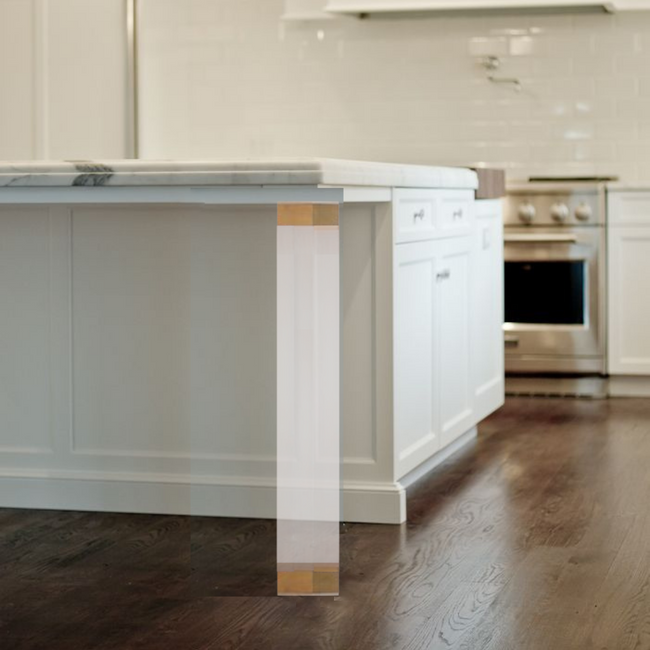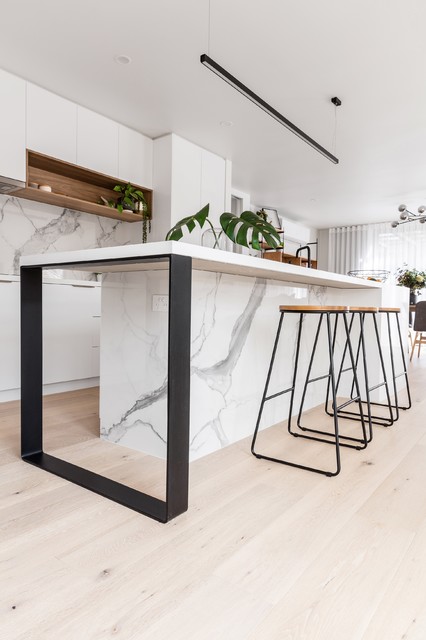Top Considerations When Picking a Kitchen Island Leg for Modern Kitchen Interiors
In the world of contemporary cooking area insides, the selection of a kitchen area island leg is crucial, affecting both looks and capability. As these elements intertwine, they increase even more concerns regarding just how to attain the excellent equilibrium in between design and usefulness, leaving one to ponder the implications of each decision on the overall kitchen experience.
Product Selections
When it comes to selecting a kitchen island leg, material choices play a vital role in both aesthetics and capability. kitchen island leg. One of the most typical materials include wood, steel, and composite alternatives, each offering distinctive advantages and possible disadvantages
Wood is favored for its warmth and traditional appeal, providing a timeless appearance that enhances numerous cooking area styles. It is highly functional, enabling customization in regards to surfaces and colors. Timber may call for even more maintenance to prevent warping or damage from dampness.
Steel, on the other hand, brings a industrial and modern-day style to kitchen islands. Stainless-steel and functioned iron are popular selections, understood for their longevity and resistance to put on. They can hold up against the roughness of daily usage yet might lack the warmth related to wood.
Composite materials, such as crafted timber or synthetic blends, offer an equilibrium between rate, toughness, and looks. These options are usually made to simulate the appearance of natural products while providing resistance to spills and scratches.
Inevitably, the choice of material need to align with the overall cooking area design and meant usage, ensuring that the cooking area island leg is both visually appealing and functional.
Design And Style
The design and design of a kitchen area island leg considerably add to the total aesthetic of the space, matching the selected product. When choosing the leg layout, take into consideration the architectural style of the kitchen area. Streamlined, minimal legs made of stainless steel or acrylic harmonize with contemporary designs, while ornate, turned wood legs improve standard or farmhouse looks.
Furthermore, the finish of the leg can affect the visual effect; a polished chrome or matte black coating may stimulate modern elegance, while distressed wood talks to rustic appeal. The leg's form also plays a vital function-- directly, angular kinds convey an even more industrial feeling, whereas rounded or tapered legs introduce a softer, much more inviting look.
Incorporating decorative components, such as decorations or carvings, can include character and personality to the kitchen area island, more enhancing its role as a prime focus. Eventually, the selected leg design need to not only straighten with the general kitchen area style yet additionally mirror the house owner's individual preference, guaranteeing that the cooking area island becomes a functional and harmonious centerpiece within the modern-day kitchen inside.
Height and Percentages
Accomplishing the appropriate height and percentages for a cooking area island leg is vital for both capability and appearances. Cooking area islands generally vary in elevation from 28 to 36 inches, relying on their meant use-- whether as a cooking surface area, dining area, or work space. Criterion counter top elevation is about 36 inches, making it necessary that the legs you select complement this elevation to supply a seamless, incorporated appearance.
Proportions likewise play a vital function in the aesthetic balance of the kitchen. The dimension and weight of the leg should agree with the total design of the island - kitchen island leg. A slender leg might be suitable for a modern or minimalistic island, while an extra considerable leg may be required for rustic or typical layouts. In addition, think about the spacing in between the legs; ample range makes sure convenience and simplicity of movement around the island.
When selecting the height and proportions of the kitchen area island leg, maintain in mind the total layout motif of your kitchen area. This interest to detail not just boosts the functionality of the room but additionally adds to a cohesive and aesthetically learn this here now attractive indoor design.
Security and Support
Constantly ensuring security and assistance in kitchen area island legs is necessary for both security and performance. A well-constructed cooking area island must endure daily use, including weight from home appliances, cooking, and social celebrations. For that reason, the choice of legs must focus on robust products and styles that can offer appropriate assistance.
When assessing security, consider the leg's material-- light weight aluminum, hardwood, or steel frequently offer exceptional toughness contrasted to lighter choices. Additionally, the layout must feature a broad base to disperse weight uniformly and decrease the threat of tottering or tipping. For circumstances, legs created with an A-frame or cross-bracing can considerably enhance stability.

Incorporating these factors to consider will not only boost the overall safety and security of the kitchen official website area however likewise boost the long life and performance of the kitchen area island, making it a useful focal point in modern-day cooking area interiors.
Ending Up Touches
When it pertains to finishing a kitchen island, thoughtful completing touches can considerably boost both its aesthetic charm and performance. Selecting the ideal leg design is essential, yet matching it with suitable details can transform the whole space. Consider adding decorative elements such as toe kicks or baseboards that match the kitchen cabinetry or floor covering to develop a seamless look.

Last but not least, the choice of finishes plays a pivotal function in connecting the style together. Whether choosing a matte, glossy, or textured coating, ensure that it aligns with the overall theme of your kitchen. A cohesive color palette and material selection will boost the kitchen island, making it a fascinating prime focus. By paying attention to these finishing touches, property owners can create a cooking area island that is both beautiful and functional, dealing with their way of living and layout choices.
Verdict

In the world of contemporary kitchen interiors, the option of a kitchen island leg is crucial, influencing both aesthetic appeals and capability.The design and layout of a cooking area island leg substantially contribute to the overall aesthetic of the room, matching the picked material.Attaining the best elevation and proportions for a kitchen island leg is vital for both functionality and appearances.Regularly making certain stability and assistance in kitchen island legs is crucial for both safety and capability.In recap, choosing a kitchen area island leg for modern-day insides requires cautious factor to consider of material selections, layout style, height, proportions, and security.